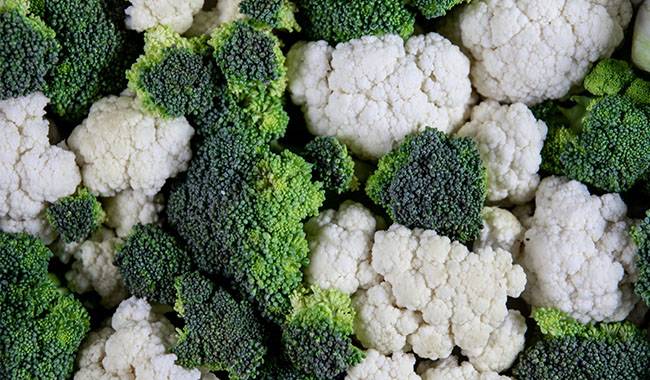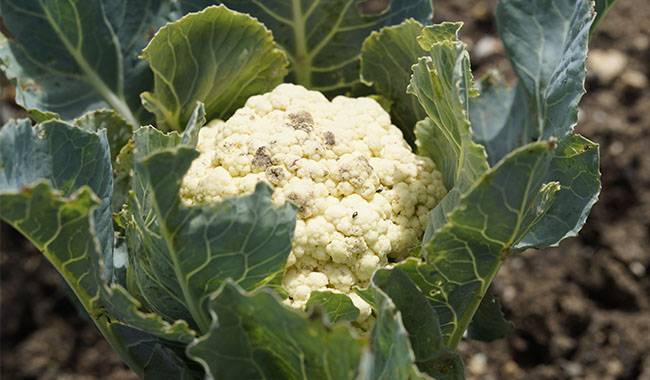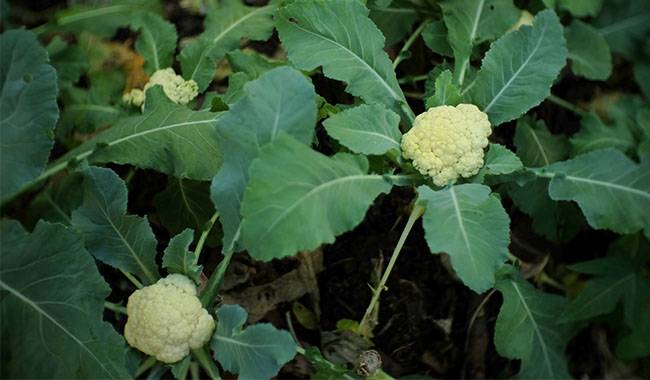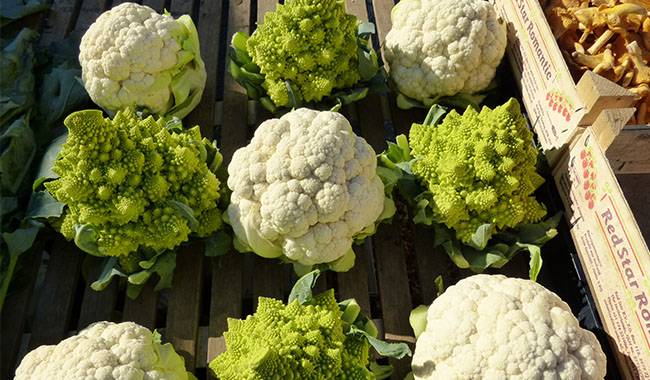
How to grow cauliflower? This article explains to you how to plant, cultivate, care for it, and store it.
The amazing medicinal properties of cauliflower are known since 5000 BC. In ancient Rome, magical properties were attributed to her and used for rituals and disease treatment.
At the beginning of our era, cabbage came to the world through the Germans and Celts.
The famous vegetable is popular for its availability and remarkable medicinal properties.
USEFUL PROPERTIES OF CAULIFLOWER
For most families, cauliflower and potatoes are occupied in the first place in the diet. It has a high fiber content.
Cauliflower and its variants are the main sources of vitamin B, vitamin C, which is very rare in vegetable crops vitamin K and vitamin U.
Cauliflower is known for its high content of tocopherols, niacin, rutin, biotin, potassium, calcium, magnesium, phosphorus, iron, zinc, and other elements.
Thanks to the fiber, cauliflower absorbs alcoholic beverages and purifies the blood, while anthocyanins and plant fungicides eliminate the effects of radiation.
The culture is known for its useful medicinal, dietary and taste properties. The most valuable amino acids, pectins, malic and citric acids, vitamins, and other substances contained in this group of vegetables make it an irreplaceable food.
Cauliflower in all its forms is a good preventive agent for various tumors. The sulfur and chlorine present in cauliflower in the form of compounds clear the walls of the digestive tract.
Cauliflower affects the metabolism of carbohydrates and fats and is involved in hematopoiesis and bone formation. Uncooked cauliflower is a good laxative, and overcooked is a color fixer.
If the seeds are infused in boiling water and taken on an empty stomach, they can be used as an anthelmintic.
The culture is used for dietary, culinary, and cosmetic purposes. The main property that makes it irreplaceable in most of the population is its low allergenicity.
For patients with food allergies, it is the only source of essential vitamins and other substances for the body.
LITTLE COMMON SENSE
According to nutrition standards based on science, 1/4 of the daily diet consists of cauliflower. The average vegetable production for the year was 122 kg, of which the share of cauliflower was 34 kg per person, including 29 kg of edible cauliflower and only 2 kg of colored cauliflower, followed by the inhabitants of large cities. At the same time, it is this variety and species of vegetable crops that provide the earliest open-air products.
CAULIFLOWER GROWING CONDITIONS
According to the maturity period, the cultivation is divided into the following categories.
Early varieties and hybrids. This group includes early varieties with a 90-100 day period from germination to head maturity.
Medium varieties and hybrids combine early, medium and late.
Mid-maturity harvesters formed a biological harvest at 105-126-135 days.
Mid-maturity with a harvest of 110-136-145 days.
Mid-late – 146-159 days.
Late maturing varieties and hybrids of cauliflower are harvested in 160-170 days. Some varieties have a growing season of 170-230 days.
HOW TO GET A HIGH YIELD OF CAULIFLOWER
Many gardeners complain that it is impossible to obtain a quality cauliflower crop at home: small heads, elongated bushes, bitter taste, etc.
TO AVOID TROUBLE, YOU MUST.
Sow only zoned cauliflower, before buying, familiarize yourself with the climatic characteristics of the area (length of the day, rainy and dry periods, frosts) and choose a zoned variety for them.
Study the biology of the crop and the requirements of the cultivar or hybrid, including the type of soil, intensity, and frequency of irrigation, nutrient availability), planting only healthy seedlings on the ground.
BRIEF BIOLOGICAL CHARACTERISTICS
Cauliflower is a subspecies of garden cabbage (Chinese cabbage). Biology is characterized by a one-year development cycle.
The crop in the growing season (compared to garden cabbage) forms a technically and biologically mature crop. The root system is fibrous.
Constant moisture content is required in the roots. The stems are cylindrical, up to 70CM (27inch) high; some varieties from lateral shoots. Stems need support when high.
Groceries are placed in the form of dense brushes 3CM-15CM (1.18inch-5.9inch) long. At technical maturity, it is represented by heads made of short branches with inflorescences.
With the delay in harvesting, elongated seed shoots – pods with seeds – are formed. Harvesting at technical maturity lasts up to 18-35 days.
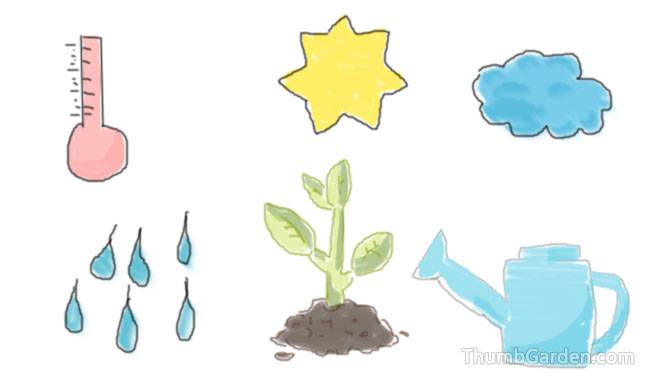
BASIC REQUIREMENTS FOR THE GROWTH OF CAULIFLOWER
SUNLIGHT
Cauliflower needs light, especially after germination and in the early stages of growth in open areas. In shaded areas, the stems are stretched and the heads form loose, rough, and prone to disease. During long daylight hours, they switch quickly to seed formation.
TEMPERATURE
In order to obtain a high-quality cauliflower crop, it is necessary to observe the temperature and irrigation regime. Cultures cannot withstand prolonged cold blows below 10°C (50°F).
The optimum air temperature from the germination stage to head formation is 15°C-18°C (59°F-64°F). A higher one will delay the development of the inflorescence. The combination of low humidity and high temperatures and their sharp fluctuations is particularly unfavorable.
SOIL
Cauliflower requires a very high agricultural background. To avoid the formation of distorted heads, the soil must be neutral in acidity and provide a high level of nutrients.
Given the high demand for nutrients, cultures require additional fertilization during the growing season, including micronutrients. Boron, copper, molybdenum, and magnesium are particularly important.
Beware! Do not use potassium chloride with cauliflower.
GROWING TECHNIQUES
Cauliflower production will always be of high quality when the agrotechnical requirements are met. In order to obtain fresh produce for a long period of time, a seedling growth method is used, with multiple sowing and rearing in unfavorable autumn conditions and late sowing in open areas.
SEEDLING SOWING
For seedling growth of cauliflower, seeds are sown in a greenhouse in mid-March and in the open ground in early May after spring frosts.
As long as a cold greenhouse is used, seeds will be sown from May 15 to 25 and planted permanently in June.
To grow cauliflower without nuclei in covered open ground, sowing took place from late April to early May and without shade at the end of June. seeds were successfully sown in early July.
The sowing dates given are approximate. In each region, and even in each area, the sowing time may vary from 8-15 days depending on the climatic conditions during the year.
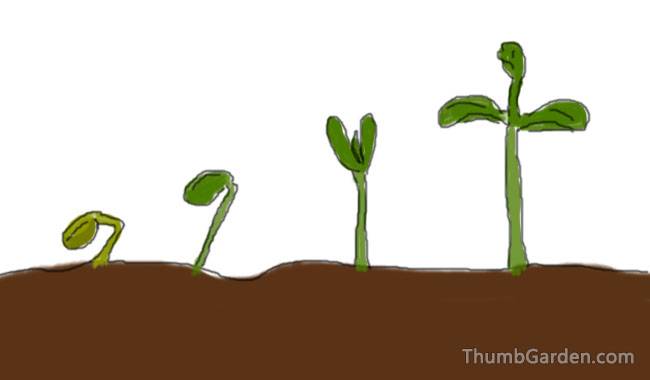
PLANTING SEEDLINGS
It is best to plant seedlings in pots baked with peat and then plant them permanently without picking. In colder regions, gardeners sow cauliflower in a prepared bed in a heated greenhouse.
If necessary, the soil can be sterilized using one of the recommended methods and filled with fertilizer. Use hummus, compost, or ready-made hummus (300-400 g).
Add 70 g of calcium superphosphate and 30 g of potassium sulfate. A mixture of mineral fertilizers can be substituted by introducing 50-60 g/sq.
Inter-nitro phosphorus or sow ordinary rows 15CM-20CM (5.9inch-7.8inch) apart and 0.5CM (0.19inch) deep, sowing the seeds in the bottom of the grooves and sprinkling them with fine mulch or sand.
Use water carefully so as not to wash off the crop. Keep the temperature at 18°C-20°C (64°F-68°F) until germination. Seedlings emerge in 4-5 days.
During this time, the temperature is lowered to 5°C-6°C (41°F-42.8°F). Lowering the temperature is very important. As in the apartment, it is impossible to grow seedlings in a hot greenhouse environment.
She needs a temperate or even cold climate. After 5-6 days of cold acclimatization, the temperature rises to 15°C (59°F). This change in temperature will allow cauliflower heads to be large and develop normally.
After 1-2 weeks, selection takes place. The seedlings are fed 3-4 times during the growing period. The main treatment is carried out with a mineral fertilizer solution in the roots or aisles.
The first cauliflower feeding is carried out 2 weeks after harvesting. Some gardeners recommend feeding immediately after harvesting. However, this technique is acceptable if the seedlings are planted in marginal soil and the acidity deviates.
For feeding, dissolve 50 grams of nitrophenols per 10 liters of water at room temperature. Wash the plants carefully with the nutrient solution that falls on the leaves of the seedlings.
Foliar feeding with a mixture of trace elements boron and molybdenum (1 g/10 liter of water) is carried out at the beginning of the 2-3 true leaf stage. This process accelerates the growth of seedlings and promotes the establishment of mature inflorescences.
The next feeding of cauliflower took place at the beginning of the 4-leaf stage. Nitrophos was diluted to a concentration of 20 g/10l of warm water and introduced to the roots (similar to the first one) and then watered.
After 10 days, a complex combination for the last feeding was prepared. Dilute 50-60g of nitrophenols, 2g of boric acid, manganese sulfate, and copper sulfate in a 10-liter container. Mix the mixture thoroughly and apply it to the roots, then water.
The soil is always kept moist (excessive dryness, as well as overwatering, can lead to root diseases and metabolic disorders in seedlings).
Plant cauliflower seedlings permanently for 30-35 days. Seedlings have a well-developed fibrous root, 5 normally developed leaves, and straight stems.
Before planting in other conditions for further planting, it is necessary to harden, then gradually reduce the temperature and change the light conditions.
CAULIFLOWER CARE
WATERING
Cauliflower – means water lovers. During the first week after disembarkation, it is necessary to carefully monitor the state of humidity. Watering 2 times a week.
But there is a special feature! Watering should be enough, but do not flood the plantation. In wet soil, lack of oxygen can destroy the function of the root system.
As the plant ages, you can switch to less frequent watering after 7-10 days, but do not let the soil dry out.
After watering, remove the soil or cover with mulch until the bush closes. In the sun, the head is covered with side leaves and fixed like a roof.
FERTILIZATION
The first feeding of the field plants takes place after 17-20 days, preferably with an organic solution. Thoroughly stir 0.5 liters of gross protein in 10 liters of water. Introduce it at the roots and cover.
The second feeding of cauliflower is carried out after 10-12 days with a nitrate solution, glycerol, or crystalline protein solution. 20-25 g of fertilizer was dissolved in 10 liters of water. The consumption of the solution was 5-6 liters per square meter.
The third feeding was also carried out with nitrophosphorus. Dissolve 30-40 grams and consume 8-10 liters of mm per square meter.
After fertilization, the plants must be rinsed with water. If there are openings where the soil will cover or hoe the broken shell.
PROTECTION AGAINST PESTS AND DISEASES
Excluded from the protection of cauliflower from diseases and pests with chemical preparations. When using tonics and herbal infusions, only non-toxic plants should be used.
Among these diseases, cauliflower can be affected by mucilaginous bacterial diseases, blackleg, powdery mildew, viral mosaic disease.
Biofungicides provide effective protection against fungal diseases that do not harm the health of families, animals, and birds.
However, their effectiveness is demonstrated in the treatment system. Therefore, processing starts in spring and takes place after 10-12 days until harvest.
The following bio fungicides can be used to treat the cultures: gosseomycin, phytosporin, ariolin-B, hamil, Trihodamine, Hebraquin, Binom, Trihopeol.
Among these pests, and snails consume cauliflower in large quantities, whiteflies, moths, kale flies, aphids, and other rodents, and sucking pests cause serious damage.
The following biopesticides with systemic applications provide good protection: methanol, Bicol, ribavirin, insecticide, etc.
It should be noted that biological products mix well in bucket mixes and can work effectively when treating plants at the same time.
Pollination of snails and with ashes. The dry ash is poured into a coarse cotton cloth and the plants are pollinated by shaking. It is also scattered between rows and under bushes.
HARVESTING AND STORAGE
Harvesting of technically mature products is done selectively. Mature heads are cut with 3-4 leaves.
The leaves protect the inflorescence from mechanical shocks and dust. Care should be taken when cutting to avoid the collapse of the outlet. Place the cutting head in the prepared container.
Sometimes the heads of cauliflower are scattered without forming a technically mature and marketable form of the product.
This happens because overgrown seedlings are planted or the irrigation regime is violated (over-drying of the soil). Too thick soil and insufficient nutrients can also negatively affect the appearance of the product.
Cutting heads can be stored for 4-6 weeks. Leaves will not tear off the product intended for storage. The optimal storage temperature is 0°C-1°C (32°F-33.8°F) and air humidity is not less than 90-95%. Store cauliflower separately from other types of cabbage.
MORE AND MORE CAULIFLOWER
Growing can be done in different ways. In case of bad weather and if the heads have not had enough time to form, they can be pulled from the roots and transferred to the basement or cellar.
There, the plants are rooted and entrenched on a grid. Growth takes place at temperatures of 1°C-3°C (33.8°F-37.4°F), while light and air humidity do not exceed 80-90%.
Plants sown late in the season do not have time to form well-developed heads before cold weather, so they are grown in a greenhouse or a greenhouse without light.
For growth, plants with well-developed leaves and heads at least 5 cm (1.96inch) in diameter are selected, rooted, and densely arranged in pre-watered 15 cm (5.9inch) plow trenches without shaking the soil.
Head growth can last up to 30 days at an air temperature of about 10°C (50°F) and 85-90% air humidity.
As the temperature decreases to 4°C-5°C (39.2°F-41°F), the process is extended to 40-50 days. During this period, the weight of the head may increase by 0.5 kg.
If grown in a greenhouse, they will be insulated as the temperature decreases.





